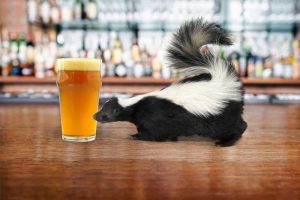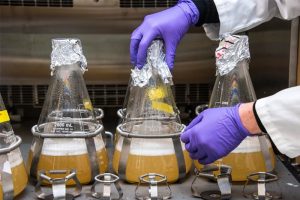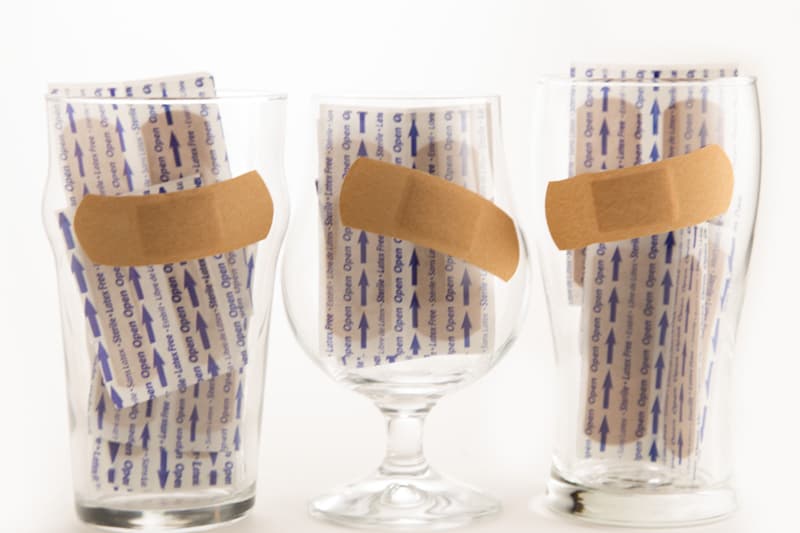What are phenols?
- Capsaicin gives chiles their fiery bite
- Carvacrol is responsible for oregano’s pungency
- Eugenol is found in cloves, nutmeg, cinnamon, and vanilla
- Guaiacol is the smoky essence in whiskey and roasted coffee
- Methyl salicylate smells and tastes just like wintergreen
- Raspberry ketone smells like raspberries
- Thymol is what gives thyme its distinctive aroma

What phenols are contained in beer?

Where do the phenols in beer come from?
Malt
Hops
Brewing water
Mashing and spraying process
Yeast
Other ingredients

The most common odor in commercial beer and craft beer is the smelly “Light-struck” flavor and aroma. It can make your beer emit a strong smell (it feels like a skunk) and make it unpleasant to drink. Guide to beer off-flavors: Light-struck What is Light-struck? When light hits the beer, the ultraviolet rays interact with

No matter how many times you have brewed beer in the past when you open the first bottle of a new batch, it is always exciting. Maybe the aroma of hops will be as good as expected, maybe the beer will be muddy, or the beer will taste like vinegar. Beer that tastes like vinegar

Have you ever tried a beer that smells of medicine and tastes like band-aids? If so, it is because the beer contains chlorophenol. Chlorophenol can give the beer a plastic taste, smoke, chlorine disinfectant, or band-aid taste. Next, the brewer of Micet Craft will explain the source of chlorophenol and how to reduce the content

It is not normal for Metallic to appear in any flavored beer. If you can taste Metallic or bloody taste in beer, it is recommended not to drink this beer. Under normal circumstances, the source of iron ions is only a very small amount of iron-containing protein in grains, which will enter the beer during

Some craft beer will produce excessive alcohol taste and aroma. This can vary from a slight alcoholic warmth to strong alcohol that tastes like moonshine. Next, Micet Craft will explore the root cause of the alcoholic odor. In addition, this is also the eighth article about beer’s peculiar smell. If you are interested, you can

The presence of hydrogen sulfide (H2S) in beer will give the beer a unique smell of rotten eggs. In some beer styles, a small amount of hydrogen sulfide will form a unique flavor in the beer. But, if beer contains more hydrogen sulfide, the beer may produce a pungent rotten egg flavor, which is not

The peculiar smell in beer has always been a headache for brewers, although some peculiar smells are characteristic in some beer styles. But acetaldehyde is a special taste, because it may cause you to have a hangover, which is very detrimental to your health. Next, Micet Craft will introduce you to acetaldehyde-related content, so that

One of the most frequently mentioned odors in beer evaluation is dimethyl sulfide (DMS). DMS is a sulfur compound that is generally thought to give beer creamed corn or cooked vegetable characteristics. Most beer brewers know very well how to reduce the risk of DMS entering the beer, such as checking the boiling time and

Is my beer infected? This is a question we often receive. Next, Micet Craft will introduce the content of beer infection. This is also the fourth article in our beer off-flavors series. If you are interested, you can read other articles related to odor. We hope to help you better complete beer brewing. Guide to beer

The most important ester found in beer is isoamyl acetate, which has a flavor like rubber or pear blossom. Isoamyl acetate is considered an ester, or a mixture of alcohol and acid. Because fermentation (yeast converting sugar into alcohol) produces isoamyl acetate, isoamyl acetate is a very common off-flavors in all beer. Although the content

The most common odor in commercial beer and craft beer is the smelly “Light-struck” flavor and aroma. It can make your beer emit a strong smell (it feels like a skunk) and make it unpleasant to drink. Guide to beer off-flavors: Light-struck What is Light-struck? When light hits the beer, the ultraviolet rays interact with

No matter how many times you have brewed beer in the past when you open the first bottle of a new batch, it is always exciting. Maybe the aroma of hops will be as good as expected, maybe the beer will be muddy, or the beer will taste like vinegar. Beer that tastes like vinegar

Have you ever tried a beer that smells of medicine and tastes like band-aids? If so, it is because the beer contains chlorophenol. Chlorophenol can give the beer a plastic taste, smoke, chlorine disinfectant, or band-aid taste. Next, the brewer of Micet Craft will explain the source of chlorophenol and how to reduce the content

It is not normal for Metallic to appear in any flavored beer. If you can taste Metallic or bloody taste in beer, it is recommended not to drink this beer. Under normal circumstances, the source of iron ions is only a very small amount of iron-containing protein in grains, which will enter the beer during

Some craft beer will produce excessive alcohol taste and aroma. This can vary from a slight alcoholic warmth to strong alcohol that tastes like moonshine. Next, Micet Craft will explore the root cause of the alcoholic odor. In addition, this is also the eighth article about beer’s peculiar smell. If you are interested, you can

The presence of hydrogen sulfide (H2S) in beer will give the beer a unique smell of rotten eggs. In some beer styles, a small amount of hydrogen sulfide will form a unique flavor in the beer. But, if beer contains more hydrogen sulfide, the beer may produce a pungent rotten egg flavor, which is not

The peculiar smell in beer has always been a headache for brewers, although some peculiar smells are characteristic in some beer styles. But acetaldehyde is a special taste, because it may cause you to have a hangover, which is very detrimental to your health. Next, Micet Craft will introduce you to acetaldehyde-related content, so that

One of the most frequently mentioned odors in beer evaluation is dimethyl sulfide (DMS). DMS is a sulfur compound that is generally thought to give beer creamed corn or cooked vegetable characteristics. Most beer brewers know very well how to reduce the risk of DMS entering the beer, such as checking the boiling time and

Is my beer infected? This is a question we often receive. Next, Micet Craft will introduce the content of beer infection. This is also the fourth article in our beer off-flavors series. If you are interested, you can read other articles related to odor. We hope to help you better complete beer brewing. Guide to beer

The most important ester found in beer is isoamyl acetate, which has a flavor like rubber or pear blossom. Isoamyl acetate is considered an ester, or a mixture of alcohol and acid. Because fermentation (yeast converting sugar into alcohol) produces isoamyl acetate, isoamyl acetate is a very common off-flavors in all beer. Although the content

